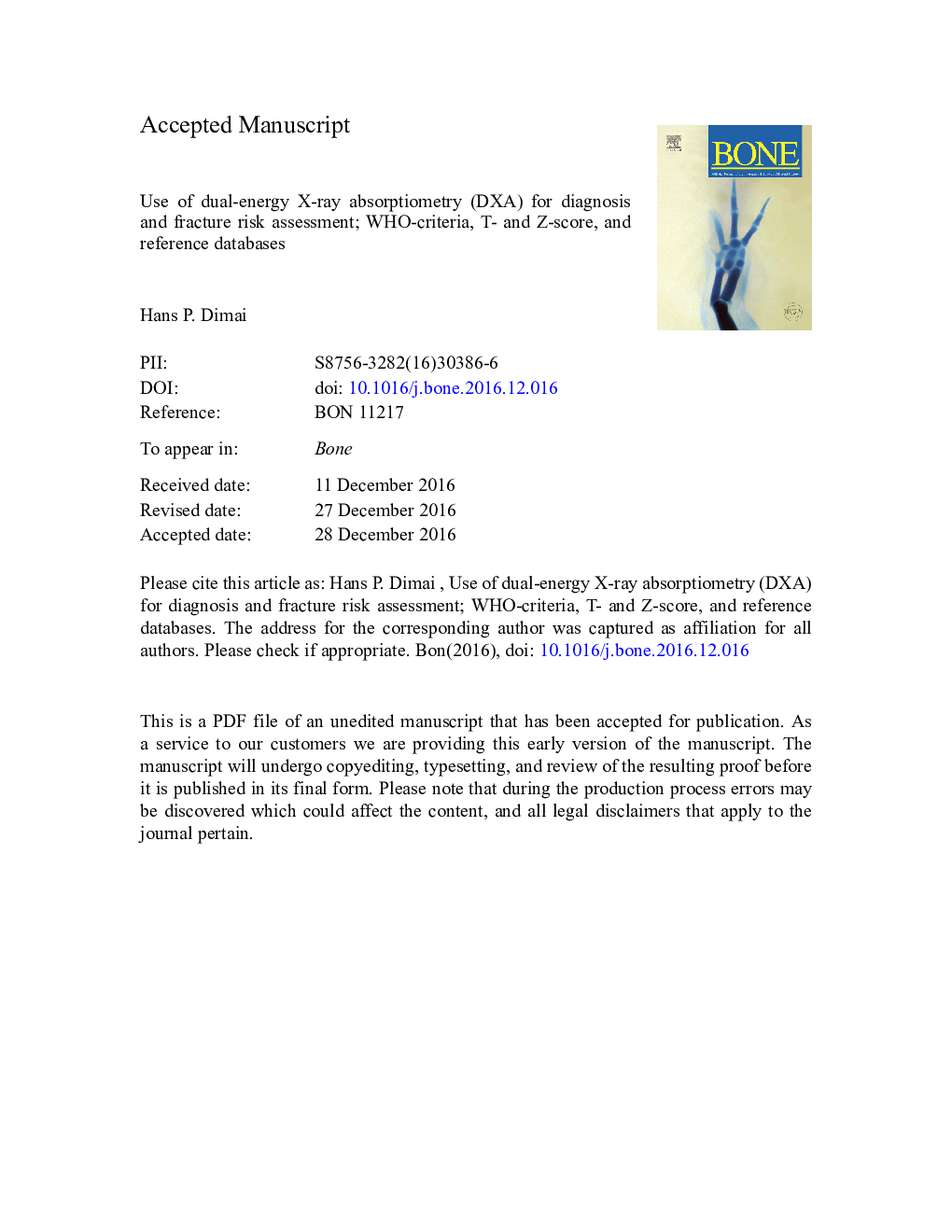| کد مقاله | کد نشریه | سال انتشار | مقاله انگلیسی | نسخه تمام متن |
|---|---|---|---|---|
| 5585238 | 1568115 | 2017 | 24 صفحه PDF | دانلود رایگان |
عنوان انگلیسی مقاله ISI
Use of dual-energy X-ray absorptiometry (DXA) for diagnosis and fracture risk assessment; WHO-criteria, T- and Z-score, and reference databases
دانلود مقاله + سفارش ترجمه
دانلود مقاله ISI انگلیسی
رایگان برای ایرانیان
کلمات کلیدی
موضوعات مرتبط
علوم زیستی و بیوفناوری
بیوشیمی، ژنتیک و زیست شناسی مولکولی
زیست شناسی تکاملی
پیش نمایش صفحه اول مقاله

چکیده انگلیسی
Dual-energy X-ray absorptiometry (DXA) is a two-dimensional imaging technology developed to assess bone mineral density (BMD) of the entire human skeleton and also specifically of skeletal sites known to be most vulnerable to fracture. In order to simplify interpretation of BMD measurement results and allow comparability among different DXA-devices, the T-score concept was introduced. This concept involves an individual's BMD which is then compared with the mean value of a young healthy reference population, with the difference expressed as a standard deviation (SD). Since the early nineties of the past century, the diagnostic categories “normal, osteopenia, and osteoporosis”, as recommended by a WHO working Group, are based on this concept. Thus, DXA is still the globally accepted “gold-standard” method for the noninvasive diagnosis of osteoporosis. Another score obtained from DXA measurement, termed Z-score, describes the number of SDs by which the BMD in an individual differs from the mean value expected for age and sex. Although not intended for diagnosis of osteoporosis in adults, it nevertheless provides information about an individual's fracture risk compared to peers. DXA measurement can either be used as a “stand-alone” means in the assessment of an individual's fracture risk, or incorporated into one of the available fracture risk assessment tools such as FRAX® or Garvan, thus improving the predictive power of such tools. The issue which reference databases should be used by DXA-device manufacturers for T-score reference standards has been recently addressed by an expert group, who recommended use National Health and Nutrition Examination Survey III (NHANES III) databases for the hip reference standard but own databases for the lumbar spine. Furthermore, in men it is recommended use female reference databases for calculation of the T-score and use male reference databases for calculation of Z-score.
ناشر
Database: Elsevier - ScienceDirect (ساینس دایرکت)
Journal: Bone - Volume 104, November 2017, Pages 39-43
Journal: Bone - Volume 104, November 2017, Pages 39-43
نویسندگان
Hans P. Dimai,